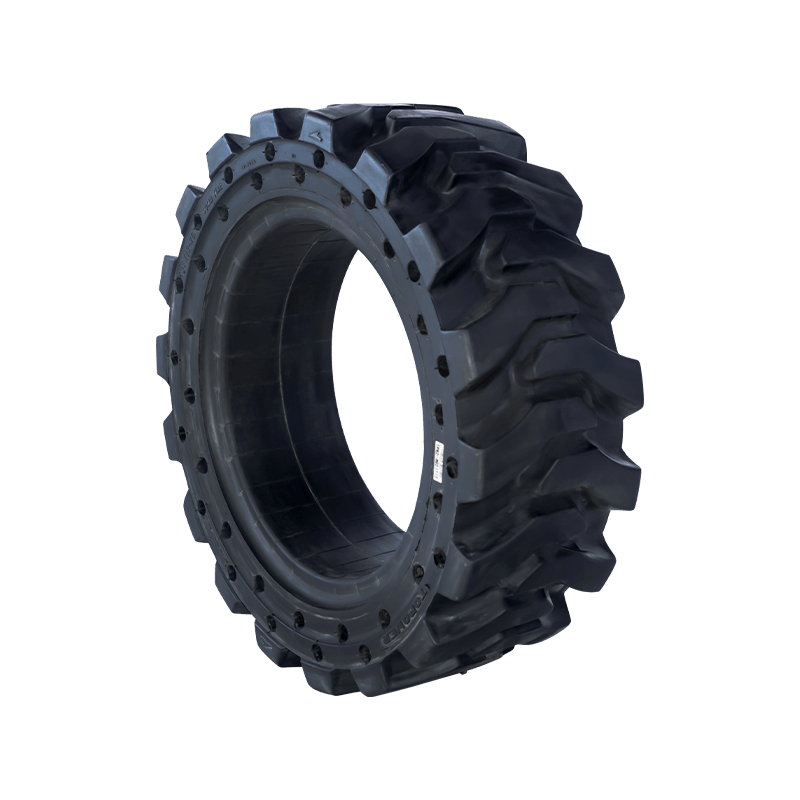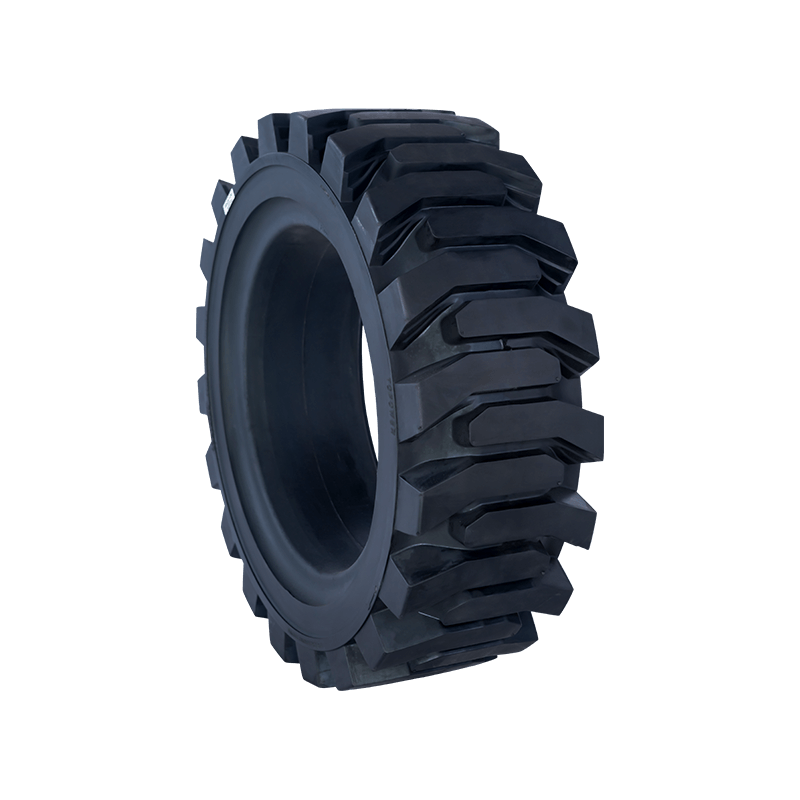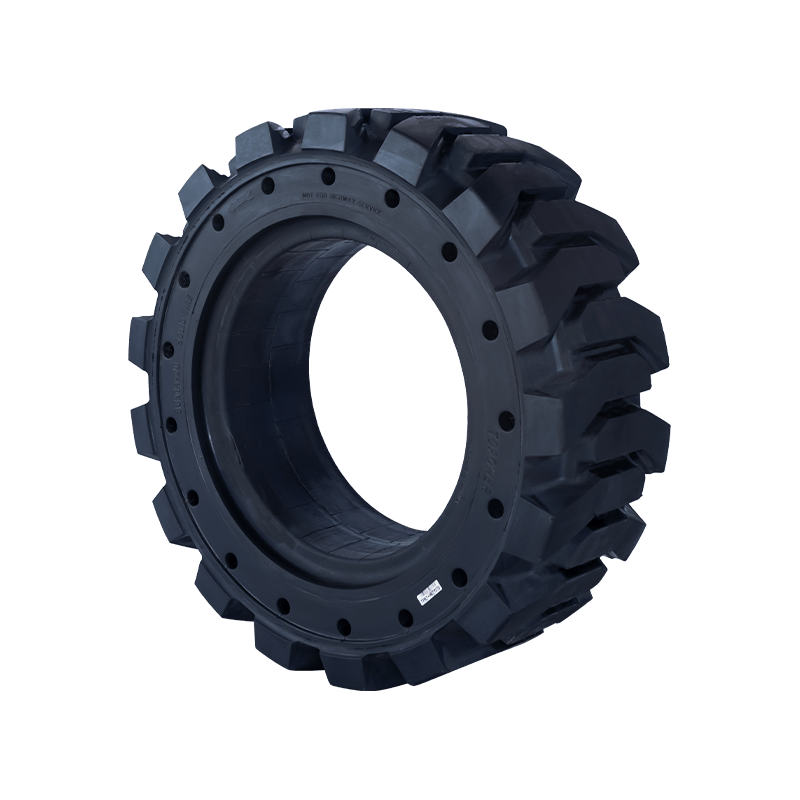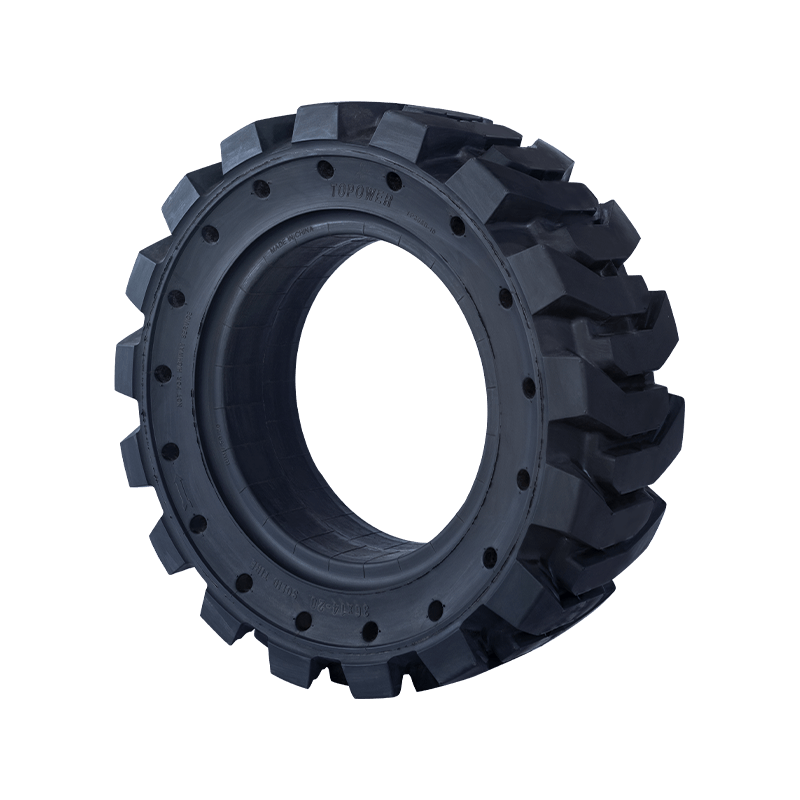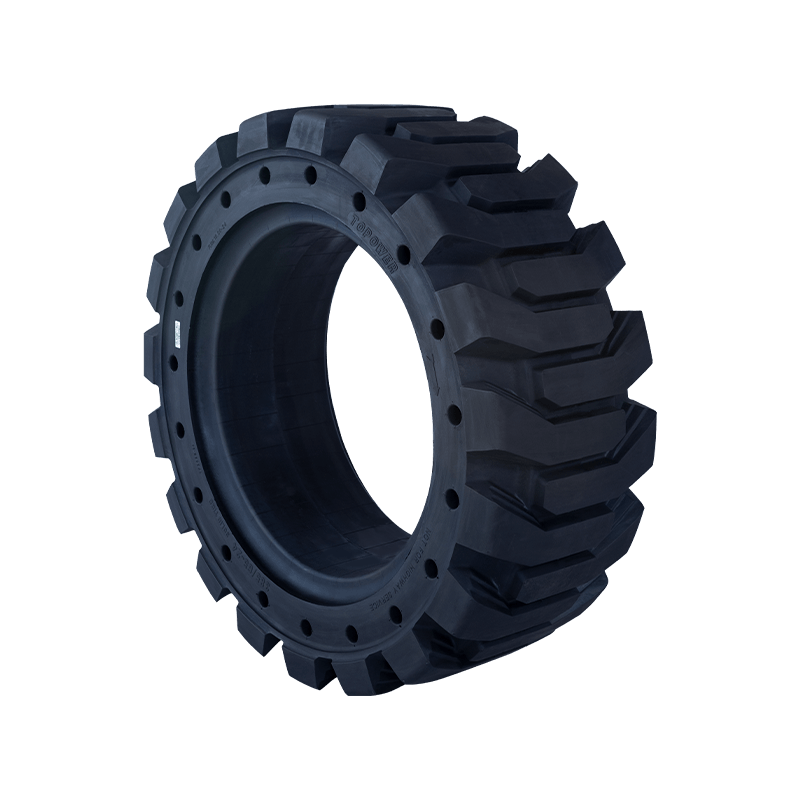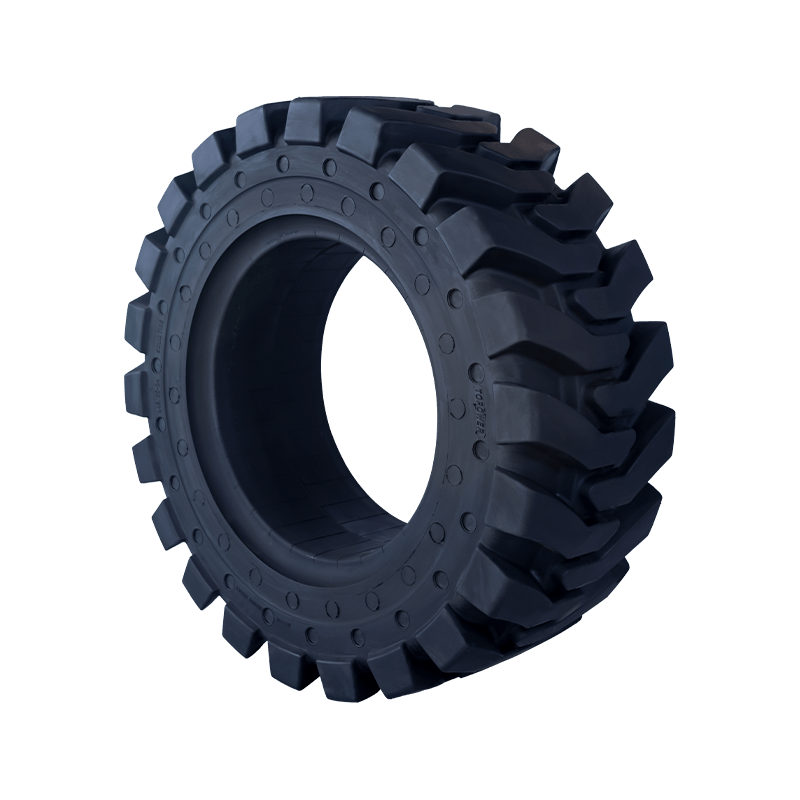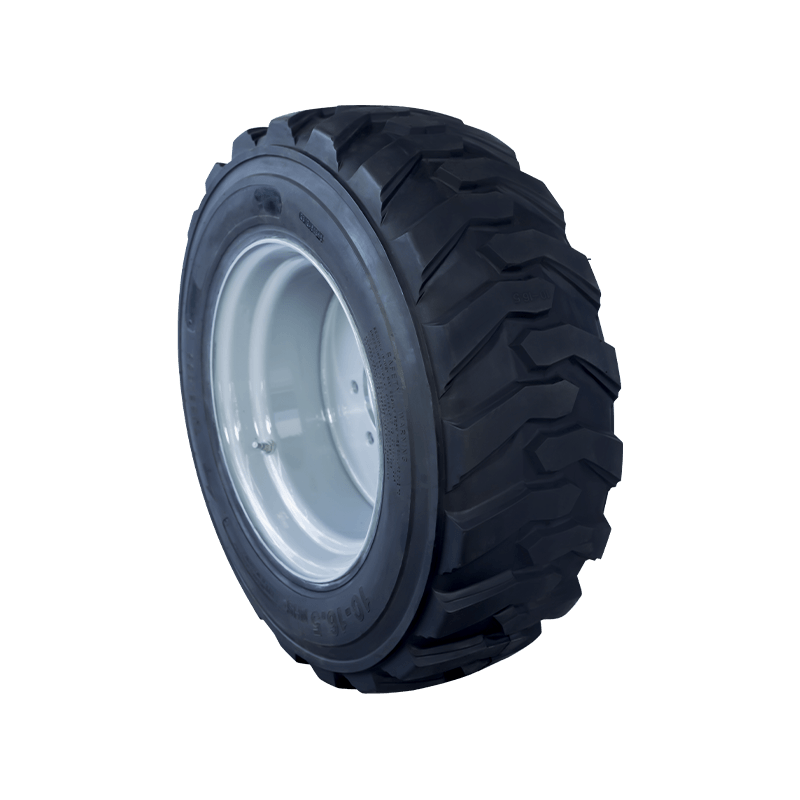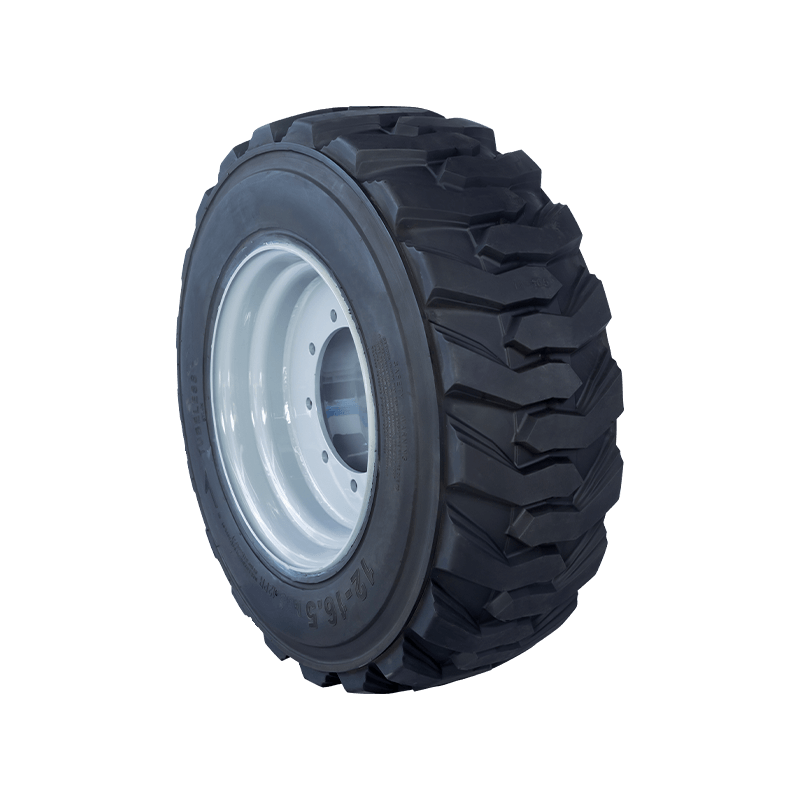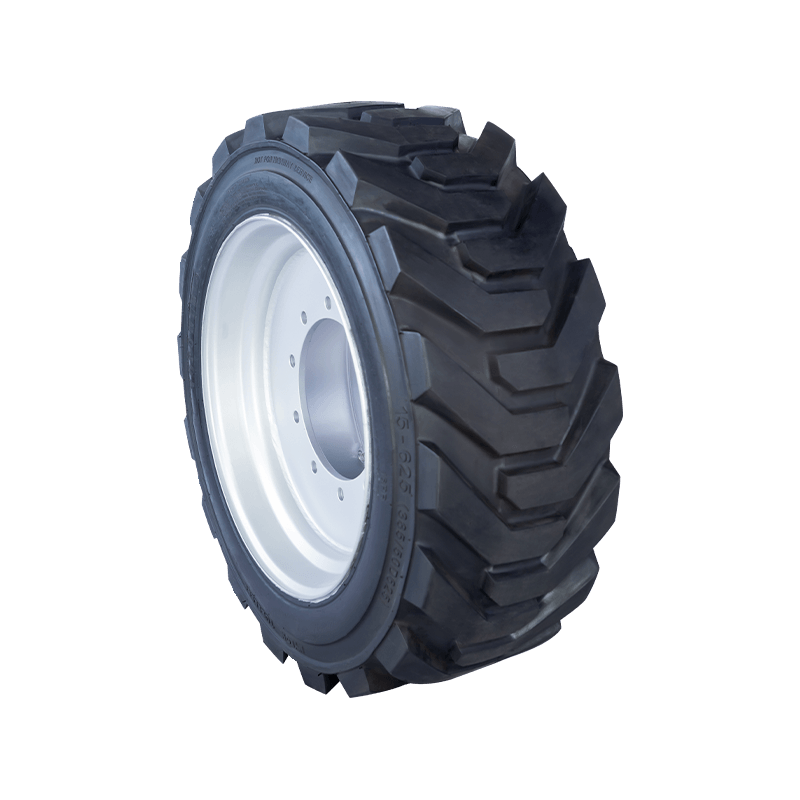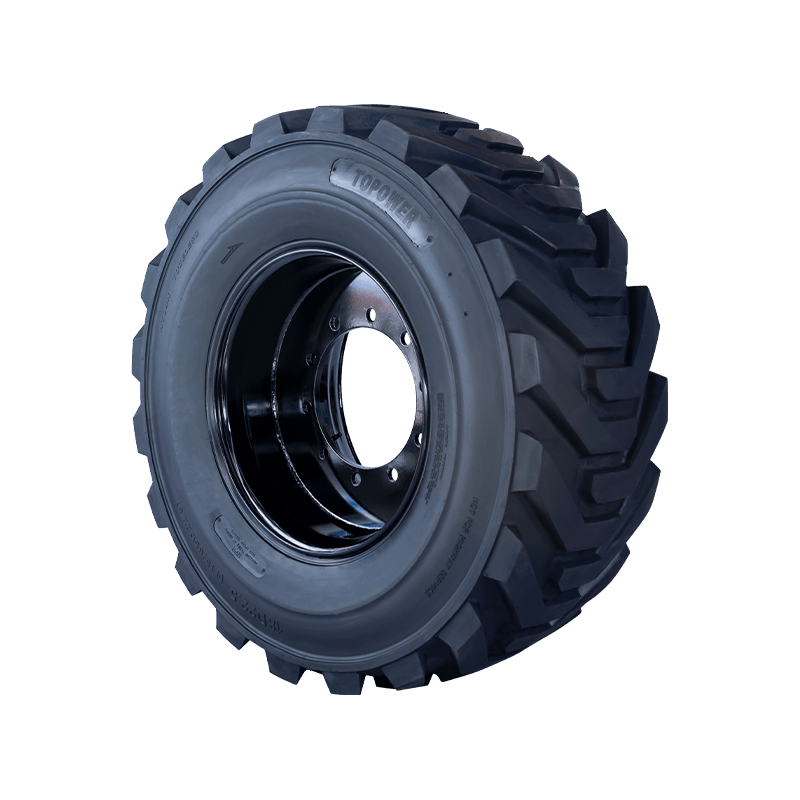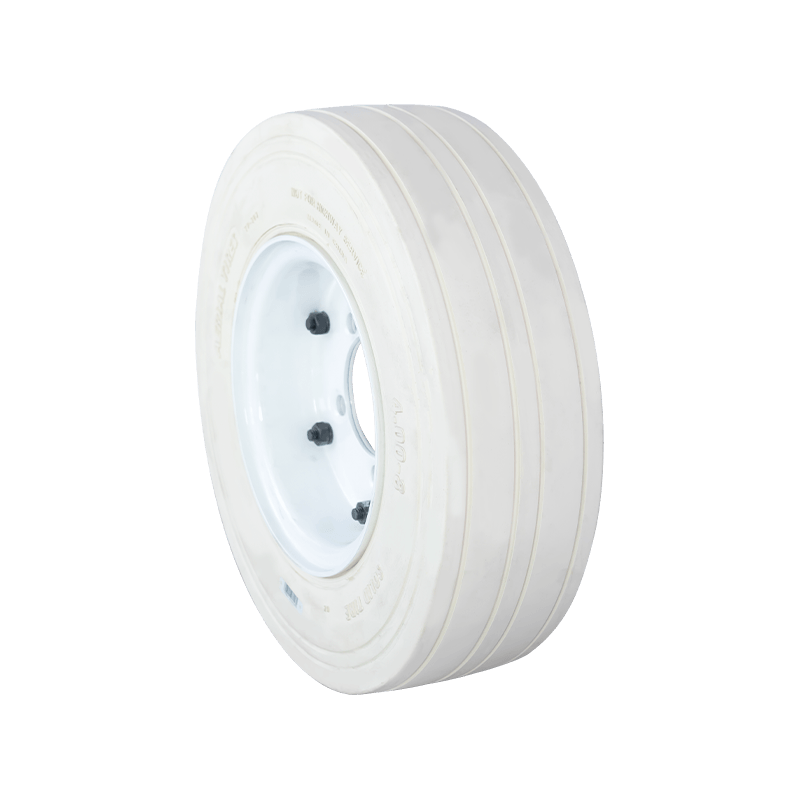What is a polyurethane solid tire?
A polyurethane solid tire is a tubeless solid tire made of polyurethane as the main material and combined with rubber properties through injection molding or hot pressing. It adopts a non-inflatable design and has no air cavity inside, which fundamentally eliminates the common problems of pneumatic tires such as air leakage and blowout.
Material structure analysis
Polyurethane layer: The outer coating layer is made of high-molecular polyurethane material, which has extremely high wear resistance, cut resistance, and aging resistance;
Rubber composite base: A rubber layer is often added to the internal structure to improve the elasticity and cushioning performance of the tire;
Metal or nylon wheel core: Some heavy-duty tires are embedded with metal sleeves or engineering plastic structures in the core to improve installation stability and bearing support.
Why use a solid structure?
No need to inflate regularly, maintenance-free, especially suitable for equipment that runs for a long time and is difficult to frequently overhaul;
Solid structure means higher overall density and load-bearing capacity, which can support loads far higher than pneumatic tires;
It will not fail due to puncture, significantly improving the continuity of operation and operational safety.
The superposition effect of material advantages
Polyurethane has stronger wear resistance than traditional rubber, which enables the tire to maintain low wear under complex working conditions such as high-frequency start-stop and violent steering;
At the same time, it maintains low rolling resistance, reduces equipment energy consumption, and improves overall operating efficiency;
The material itself has excellent chemical corrosion resistance and is suitable for special environments such as oil, acid and alkali.
Upgrade relationship with traditional tires
Compared with traditional solid rubber tires, polyurethane solid tires have achieved a better balance between hardness, load-bearing capacity, and elasticity. At the same time, they overcome the problems of easy cracking and fast aging of pure rubber tires. They are the representative products of the new generation of solid industrial tires.
What is the role of a polyurethane solid tire?
In high-intensity operation scenarios such as industrial production and logistics transportation, whether the equipment can operate efficiently often depends on the stability and reliability of its walking system. With its sturdy structure and excellent performance, polyurethane solid tires play a functional role far more than "supporting weight". It not only shows significant advantages in load, durability, and puncture resistance, but also becomes a key link in ensuring operation continuity, reducing failure rate and operating costs through excellent rolling performance and environmental adaptability. The following further analyzes the comprehensive value of polyurethane solid tires in equipment operation from multiple dimensions.
Provide long-lasting and stable mobile support
The solid structure design ensures that even in high-load and high-pressure environments, the tire will not deform, bulge or burst, greatly improving the continuity and safety of equipment operation.
The high-strength structure of polyurethane can disperse the load pressure, and will not deform even under long-term and high-frequency operation. It is particularly suitable for heavy equipment such as forklifts and transporters operating under full load.
For automated equipment with extremely high precision requirements such as AGV carts and track inspection equipment, polyurethane tires provide stable linear motion trajectories and excellent directional control to ensure that the running path is accurate and not offset.
Enhance operational reliability and reduce equipment failures
Facing complex and harsh ground environments, such as factories full of sharp stones and metal debris, polyurethane solid tires can effectively prevent tire damage and interruption of operation with their excellent puncture resistance and cut resistance.
In addition, the tire is not afraid of air leakage, greatly reducing the hidden dangers of equipment shutdown caused by common failures of traditional tires such as insufficient air pressure and bulging and damage. It is particularly suitable for assembly lines and storage vehicles that operate continuously for a long time.
Even in harsh environments with high temperature, high humidity, oil or acid-base corrosive liquids, its material stability remains unchanged, and it is not easy to age or deform, further improving its reliability.
Reduce downtime risks and improve operating efficiency
Polyurethane solid tires show good buffering performance and grip in operating environments with frequent starts and stops, improving the stability and operability of vehicles during starting, braking, and steering.
Compared with traditional tires, polyurethane solid tires do not need to be inflated and inspected regularly, significantly reducing the maintenance frequency and manual management pressure, and avoiding tire failures caused by human negligence.
Even when used in poor maintenance environments such as outdoor, mountainous areas, and docks, the tire can still operate stably and provide solid support for continuous operation of the equipment.
Extend service life and optimize comprehensive operating costs
Polyurethane materials have excellent wear resistance, which enables them to maintain extremely low wear rates even in high-intensity operation, thereby significantly extending the service life of the tire.
The extension of the tire replacement cycle directly reduces the equipment downtime and replacement costs caused by tire damage, and improves operating efficiency and corporate profit margins.
In addition, long life means a lower frequency of tire spare part procurement, reduced inventory pressure, reduced storage costs, and cost optimization from a full life cycle perspective.
Why use polyurethane?
Polyurethane has become the preferred material for solid tires due to its excellent performance. The specific advantages are reflected in the following aspects:
1. Excellent wear resistance
Polyurethane has a stable molecular structure and is not easily damaged during friction. It can effectively resist long-term high-frequency rolling and friction;
Even in high-intensity use environments such as warehouses and factories, the tire surface remains intact and has a clear outline, significantly extending the service life;
Reduce the performance degradation of tires due to wear and ensure the continuous and stable operation of equipment.
2. Strong impact and tear resistance
Polyurethane materials have good flexibility and can absorb impact energy to prevent crack expansion;
In complex ground environments such as sharp stones and metal debris, tires are not prone to puncture or tear damage;
Effectively reduce the downtime of equipment caused by tire damage.
3. Excellent chemical and environmental adaptability
Polyurethane has good tolerance to a variety of industrial chemicals such as mineral oil, hydraulic oil, acid and alkali solutions;
It can withstand a variety of harsh climatic conditions such as high temperature, low temperature, ultraviolet radiation, and adapt to diverse indoor and outdoor environments;
Tires are not easy to age, harden or crack, and maintain long-term stable performance.
4. Reduce maintenance frequency and reduce overall operating costs
Polyurethane tires do not need to be inflated, avoiding common problems of traditional pneumatic tires such as tire blowouts and air leaks;
The long-lasting wear-resistant characteristics extend the tire replacement cycle and reduce maintenance and replacement costs;
Improve equipment operation continuity and operating efficiency, and reduce production interruptions caused by tire failures.
5. Adapt to diverse industrial application needs
Polyurethane tires can adjust hardness and color according to the use environment to meet the needs of different equipment and working conditions;
Its excellent performance supports the efficient operation of a variety of equipment such as forklifts, AGV transporters, and port machinery.
Which equipment provides key support?
Forklift/electric stacker: When loading and unloading under high load, polyurethane tires can prevent dangerous situations such as tire blowouts and slipping, ensuring the dual safety of operators and goods.
AGV smart transporter: The tire has low rolling resistance and high grip, and maintains high stability and precise navigation when the AGV runs at high speed and complex paths, which helps the intelligent logistics system to operate efficiently.
Climbing platform vehicle: Climbing platforms used for high-altitude construction and maintenance require high tire stability and anti-skid ability. Polyurethane solid tires provide stable support to ensure the safety of high-altitude operations.
Logistics and handling equipment: In the face of automatic conveying and handling equipment that operates all-weather and for a long time without interruption, polyurethane tires have become an ideal choice for efficient operations due to their excellent fatigue resistance and low maintenance characteristics. Write a summary paragraph
What are the significant advantages of polyurethane solid tires?
High load-bearing capacity: stable support of heavy loads
The molecular structure of polyurethane materials is extremely tight and highly cross-linked, giving tires excellent mechanical strength and pressure resistance. In industrial equipment, especially heavy machinery such as forklifts, stackers, dock cranes and other applications, tires need to bear huge weight pressure. Polyurethane solid tires can evenly disperse the load to avoid excessive local force causing tire deformation or structural damage.
Due to internal inflation, traditional pneumatic tires are prone to insufficient air pressure, blowouts or bulging, which seriously affects the stability and safety of the equipment. Solid structure tires completely eliminate the interference of air pressure factors, greatly reduce the risk of blowouts, and ensure that the equipment can operate continuously and stably in harsh environments and high loads. Data shows that under the same size, the load-bearing capacity of polyurethane solid tires can be increased by 20% to 30% compared with rubber pneumatic tires, providing ideal support and guarantee for high-load industries such as metallurgy, ports, and large-scale warehousing.
Excellent wear resistance: still as new after long-term operation
As a polymer material, polyurethane has excellent wear resistance, and its surface molecular chain structure shows extremely strong stability and durability when facing mechanical friction. This means that even if the tires roll, start and turn frequently on hard surfaces such as cement and steel, they will not wear out quickly.
Compared with traditional rubber tires, polyurethane tires have significant advantages in wear rate, can maintain clear patterns and structural forms on the tire surface, and reduce performance degradation caused by tire wear. Especially in the environment of frequent start-stop and sharp turns, polyurethane tires are not prone to "wheel surface hot melting" or "side peeling", which further extends the tire life cycle and reduces the frequency of equipment maintenance and replacement.
Anti-puncture and anti-crack performance: fearless in the face of harsh working conditions
The molecular structure of polyurethane gives the material a certain elasticity and toughness, allowing it to absorb energy when hit by sharp objects, preventing crack expansion and material damage. In actual application environments, the ground is often covered with metal debris, glass fragments, nails and various sharp stones, which are very easy to puncture or cut traditional tires.
Due to its unique anti-puncture performance, polyurethane solid tires can maintain their appearance intact even if they run for a long time in these complex terrains, greatly reducing the risk of equipment shutdown due to tire damage. Equipment maintenance personnel can therefore reduce the workload of frequent inspections and tire replacement, reduce operating costs, and improve production efficiency.
Corrosion resistance and weather resistance: strong support for all-weather operations
Polyurethane materials have natural resistance to a variety of chemical liquids, and can effectively resist corrosion of mineral oil, hydraulic oil, alkaline aqueous solution and weak acid solution on tire materials. This makes it particularly suitable for use in chemical plants, smelters and other industrial sites with strict environmental requirements.
Polyurethane tires can withstand extreme temperature changes and maintain their physical properties and flexibility in an environment of -40℃ to +70℃, ensuring the normal use of tires whether in cold northern storage or in hot open-air docks.
Ultraviolet rays and humidity changes are usually the main factors for tire aging and cracking, but polyurethane tires have excellent UV resistance and are not prone to aging, hardening or cracking due to sun and rain, ensuring their long-term stable operation outdoors and in harsh weather conditions.
Compared with traditional tires, the advantages are more obvious
| Tire Type | Polyurethane Solid Tire | Rubber Tire |
|---|---|---|
| Requires Inflation | No inflation needed, maintenance-free | Moderate, prone to deformation or bulging |
| Load Capacity | High, suitable for heavy-duty equipment | Moderate, prone to deformation or bulging |
| Wear Resistance | Excellent, ideal for frequent use | Poorer, wears out quickly |
| Puncture Resistance | Outstanding, resistant to debris and sharp objects | Poor, prone to blowouts |
| Service Life | Long, average lifespan increased by over 30% | Shorter, needs frequent replacement |
| Environmental Adaptability | Corrosion-resistant, UV-resistant, withstands extreme temperatures, wide applicability | Prone to aging, unsuitable for harsh environments |
Polyurethane solid tires have a wide range of applications
Polyurethane solid tires have been widely used in many industries due to their superior performance such as high load-bearing capacity, wear resistance, puncture resistance and corrosion resistance. It not only meets the needs of high-intensity operations, but also adapts to complex and changing environmental conditions, providing reliable protection for equipment operation. The following is an in-depth analysis of the main application areas and specific usage scenarios:
Warehousing and logistics: Forklifts, aerial platforms, transporters and other equipment frequently shuttle and transport goods in warehouses. The working environment is mostly closed or semi-enclosed space, and the ground is mostly concrete or steel plates. Polyurethane solid tires can withstand long-term high-intensity operations, are wear-resistant, reduce work interruptions caused by tire blowouts or tire damage, and ensure continuous and efficient logistics operations.
Its excellent grip and low noise characteristics also improve operating comfort and the safety of the working environment.
Construction engineering: Polyurethane solid tires are often used for heavy-duty equipment such as tower crane bases and engineering mobile platforms. Its strong load-bearing capacity and compression and wear resistance can cope with the complex and changing terrain and high-load conditions of construction sites. Tires are not easily punctured or damaged by sharp stones, which reduces the time and cost loss caused by equipment downtime and tire replacement at the construction site.
Metal smelting: The environment of metal smelting plants is mostly high temperature and highly corrosive. Traditional tires are prone to rapid aging due to high temperature and oil corrosion. With its high temperature resistance and chemical corrosion resistance, polyurethane solid tires have become an ideal choice for smelter transporters and heavy machinery. Its stable physical properties ensure that equipment can continue to operate in harsh environments and improve production efficiency.
Port terminals: The port operating environment has extremely high requirements for tire performance. Equipment such as container transporters and cranes need to withstand frequent starts and stops and high loads. The high load-bearing and wear resistance of polyurethane solid tires ensure that the tires maintain excellent performance on heavy loads and rough surfaces, reduce failure rates, and ensure the continuity and efficiency of port transportation.
Track maintenance and aviation ground services: Track maintenance vehicles and airport ground service trailers have extremely high requirements for tire stability and safety. Polyurethane solid tires provide smooth operation support to ensure that equipment can move accurately and avoid affecting the maintenance progress of track or aviation equipment due to tire problems. Its wear resistance and puncture resistance also reduce the maintenance burden caused by bad road conditions.
Intelligent manufacturing: In the field of intelligent manufacturing, intelligent logistics equipment such as automatic guided vehicles (AGVs) and automatic tractors use polyurethane solid tires in large quantities. This type of tire not only has a strong load-bearing capacity, but also ensures that the AGV remains stable during high-speed operation and complex path navigation, improving the operating efficiency and system stability of the automated production line. Its low noise and low vibration characteristics are also suitable for smart factories that have high requirements for the working environment.

 English
English русский
русский Español
Español عربى
عربى



